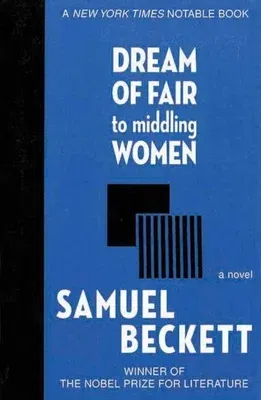Samuel Beckett
(Author)Dream of Fair to Middling WomenPaperback, 1 September 2012

Qty
1
Turbo
Ships in 2 - 3 days
In Stock
Free Delivery
Cash on Delivery
15 Days
Free Returns
Secure Checkout

Part of Series
Arcade Classics
Print Length
272 pages
Language
English
Publisher
Arcade Publishing
Date Published
1 Sep 2012
ISBN-10
1611457580
ISBN-13
9781611457582
Description
Product Details
Author:
Book Format:
Paperback
Country of Origin:
US
Date Published:
1 September 2012
Dimensions:
20.57 x
13.72 x
2.29 cm
Genre:
Ireland
ISBN-10:
1611457580
ISBN-13:
9781611457582
Language:
English
Pages:
272
Publisher:
Series:
Weight:
340.19 gm